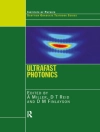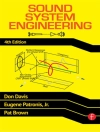This book gathers selected, extended and revised contributions to the 16th International Symposium on Computer Methods in Biomechanics and Biomedical Engineering, and the 4th Conference on Imaging and Visualization (CMBBE 2019), held on August 14-16, 2019, in New York City, USA. It reports on cutting-edge models and algorithms for studying various tissues and organs in normal and pathological conditions; innovative imaging and visualization techniques; and the latest diagnostic tools. Further topics addressed include: numerical methods, machine learning approaches, FEM models, and high-resolution imaging and real-time visualization methods applied for biomedical purposes. Given the scope of its coverage, the book provides graduate students and researchers with a timely and insightful snapshot of the latest research and current challenges in biomedical engineering, computational biomechanics and biological imaging, as well as a source of inspiration for future research and cross-disciplinary collaborations.
İçerik tablosu
Precise Mean Axis of Rotation (MAR) Analysis for Clinical and Research Applications.- Mathematical Model of Age-Specific Tendon Healing .- Classification of Elderly Fallers and Non-fallers Using Force Plate Parameters from Gait and Balance Tasks.- Creation of Categorical Mandible Atlas to Benefit Non-Rigid Registration.- The Effect of Non-Linear Spring-Loaded Knee Orthosis on Lower Extremity Biomechanics.- Consideration of Structural Behaviour of Bones in a Musculoskeletal Simulation Model.- Towards Particle Tracking Velocimetry of Cell Flow in Developing Tissue using Deep Neural Network.- An Index Finger Musculoskeletal Dynamic Model.- Accuracy of Anthropometric Measurements by a Video-based 3D Modelling Technique.
Yazar hakkında
Gerard Ateshian is the Andrew Walz Professor of Mechanical Engineering and Director of the Musculoskeletal Research Laboratory at Columbia University in New York City. His primary research is in the field of soft tissue mechanics, with an emphasis on cartilage mechanics, lubrication, and tissue engineering, and the formulation of growth theories for biological tissues. In collaboration with Prof. Clark T. Hung at Columbia, he has translated his findings on cartilage mechanics to the field of functional cartilage tissue engineering, with a particular focus on the role of mechanical loading in tissue growth. Together with Dr. Jeffrey A. Weiss at the University of Utah, he has developed open-source computational tools that facilitate the modeling of tissue mechanics, transport, and growth processes (febio.org). He has applied and validated these tools with the modeling of engineered cartilage growth.
Kristin Myers is an associate professorin the Department of Mechanical Engineering at Columbia University in the City of New York. In 2010 she founded the Myers Soft Tissue Lab at Columbia, which uses experimental, theoretical, and computational mechanics to solve problems in Women’s Health and Reproductive Biomechanics. With clinical translation in mind, her lab is uncovering the structural antecedents of preterm birth. Her current obstetrics research is done in collaboration with the Department of Obstetrics and Gynaecology at the Columbia University Irving Medical Center. She received her Mechanical Engineering doctorate and master’s degree from Massachusetts Institute of Technology and her bachelor’s degree from the University of Michigan. In 2017 Kristin was given the American Society of Mechanical Engineers Y.C. Fung Young Investigators award for her contributions to the field of biomechanics, and in 2019 Kristin was awarded the Presidential Early Career Award for Scientists and Engineers (PECASE) for her work in understanding tissue growth and remodelling in pregnancy.
João Manuel R. S. Tavares is a senior researcher at the Instituto de Ciência e Inovação em Engenharia Mecânica e Engenharia Industrial (INEGI) and Associate Professor with Habilitation at the Department of Mechanical Engineering (DEMec) of the Faculdade de Engenharia da Universidade do Porto (FEUP). He graduated in Mechanical Engineering at the Universidade do Porto, Portugal in 1992. He earned his M.Sc. degree and Ph.D. degree in Electrical and Computer Engineering from the Universidade do Porto in 1995 and 2001, respectively, and the Habilitation in Mechanical Engineering in 2015 from the same University. João Tavares is co-editor of more than 50 books, co-author of more than 35 book chapters and 650 articles in international and national journals and conferences. Further, he is author of 3 international as well as 3 national patents. He has been a committee member of several international and national journals and conferences, and is the co-founding and co-series editor of the book series “Lecture Notes in Computational Vision and Biomechanics” published by Springer. He is the founding editor and Editor-in-Chief of the journal “Computer Methods in Biomechanics and Biomedical Engineering: Imaging & Visualization” published by Taylor & Francis, and co-founder and co-chair of the international conference series Comp IMAGE, ECCOMAS Vip IMAGE, ICCEBS, and Bio Dental. Additionally, he has been (co)supervisor of several M.Sc. and Ph.D. theses and supervisor of several postdoc projects. He has participated in many scientific projects both as a researcher and as a scientific coordinator. His main research areas include computational vision, medical imaging, computational mechanics, scientific visualization, human–computer interaction, and new product development. More information can be found at his personal page at www.fe.up.pt/~tavares












